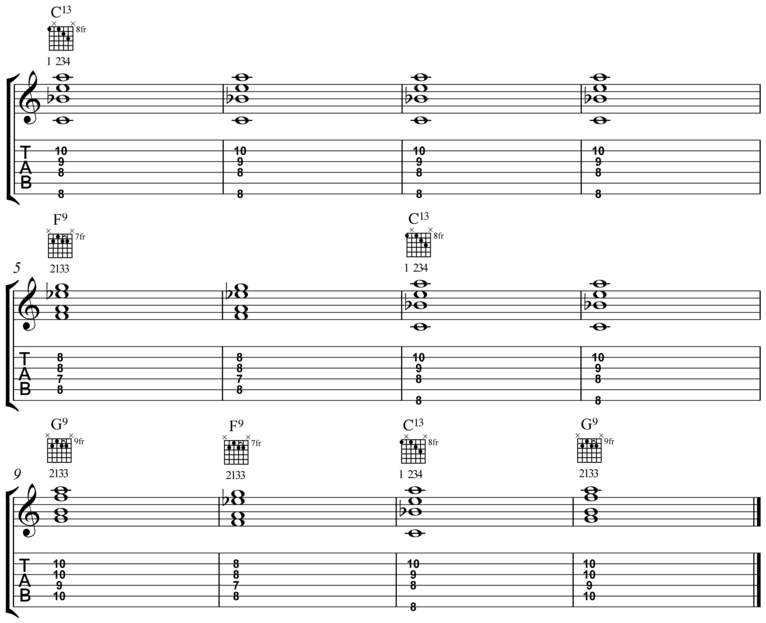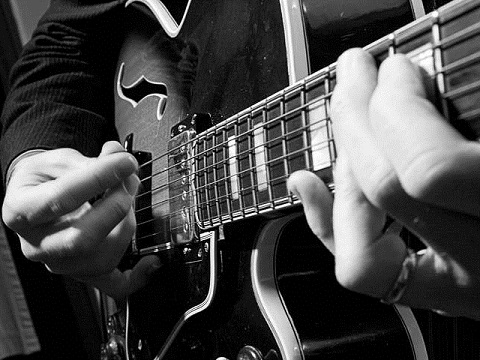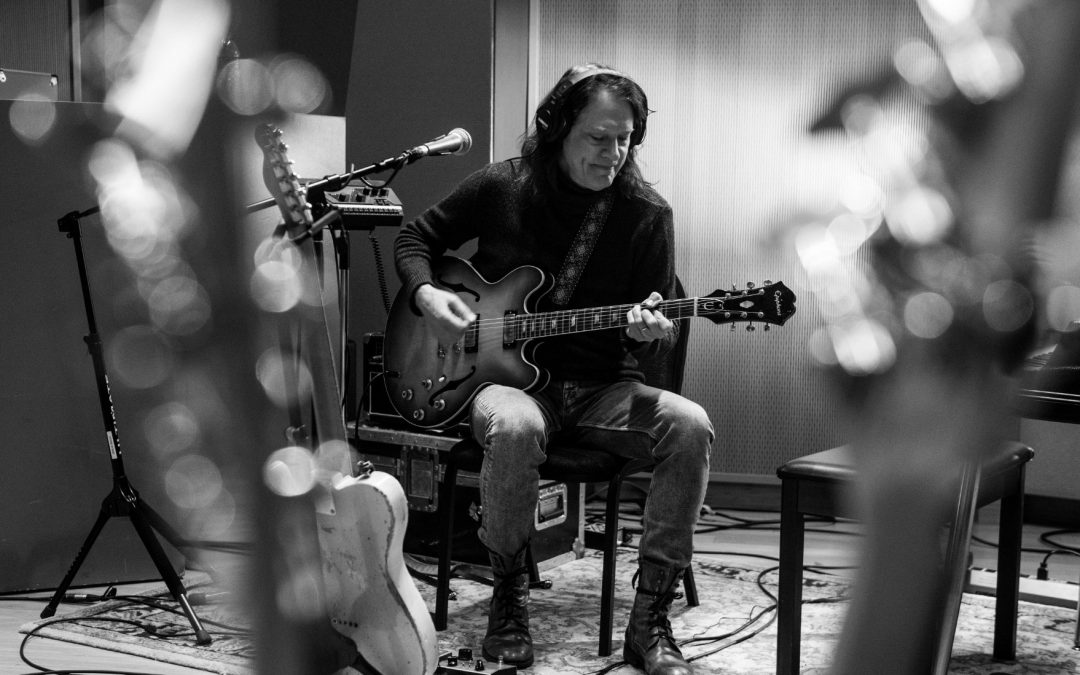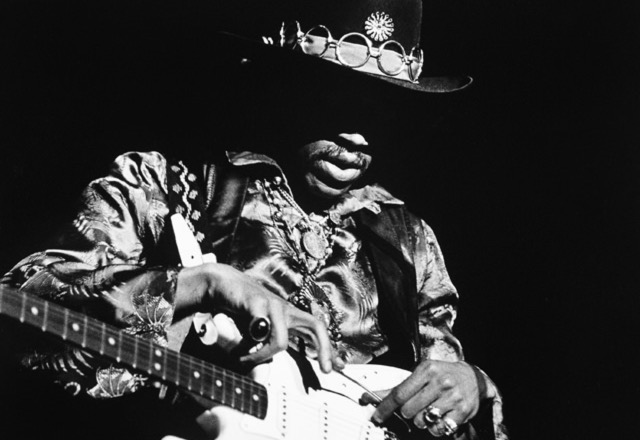Check out the following blues in C which features some jazzed-up 13th and 9th chords. The chords will do most of the work for you; what you’ll need to do is give your improvisations a jazzier feel by modifying your phrasing. You can still use pentatonic minor/major and the blues scale but what we’re going to do here is really make use of those chord tones to outline the changes.

The opening C13 chord contains the following notes:C, E, G, Bb, D, F, AIf we extract the E, G, Bb, D we have an Em7b5 arpeggio which can be used to great effect over this chord as it contains four of the chord tones and superimposes the sound of m7b5 arpeggio.

Load up your looper with the C13 chord and try it out with the above pattern. Next try reaching for this m7b5 to blend it in with your regular pentatonic/blues scale licks. Incidentally, a 13 chord contains all the notes from the Mixolydian scale, so you might want to throw in some C Mixolydian over this chord too. If you’re in the market for a looper pedal, I’d highly recommend the tc electronics ditto.
The IV chord is F9, which also contains a m7b5 arpeggio and the following notes:
F, A, C, Eb, G
Over F9, you can play an Am7b5 arpeggio. For easy access to this, simply shift the pattern above down to the next string set. Due to the guitar’s tuning, the notes on the B string will shift up one fret, but know that it’s essentially the same pattern, and still within easy reach of our C pentatonic/blues box at the 8th fret.

For easy access to the m7b5 arpeggio for the G9 chord, you can simply shift the above pattern up two frets as the m7b5 arpeggio in this case will be Bm7b5 – again the top four notes of the G9 chord:
G, B, D, F, A
Here’s the diagram for reference:

While you probably won’t want to play the corresponding m7b5 arpeggio over every chord change, it’s a great blues soloing trick to have up your sleeve and will give you a distinctly jazzier sound. Feel free to expand these patterns over the fretboard when you’ve incorporated them into your standard blues/pentatonic box positions.



